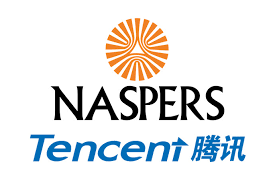Some sharing, some earnings, some follow-ups
Trying a new format to see if this is something that sticks
On Coffee Can Philosophy
I have written about my philosophy of Coffee Can Investing before on this substack. If you are new and haven’t read it, I recommend reading it now. I heard a podcast recently featuring Mohnish Pabrai1 and there are parts of it that justify the coffee can approach better than anything else I have written so far, and in his “shameless cloner” approach, I am cloning the contents here to convince you all of this approach.
Podcast & transcript here. Some clippings below:
Example of Walmart in Nifty-50
Let’s say you assume Walmart is part of the Nifty-50 and you assume that it has a 2% weight.
In the Nifty-50 because they’re 50 stocks, each one has a 2% weight, and you assume that the other 49 stocks go to zero, they just get wiped out. And you assume that you bought Walmart at the IPO in 1970, and you held it till today. The Nifty-50 with 49 out of 50, gone to zero, would’ve ended up with something like a 13.3% annualized return. And the S&P 500 is 10.3% or something. So with just 2% of the portfolio surviving and being there for the entire 52-year period, you still significantly outperform the S&P 500.
And of course 49 of the other names didn’t go to zero. They were like McDonald’s and Coke and Procter Gamble.
Example of Nifty-50 without Walmart
Now, if you take the other case, which is that, let’s assume that Walmart is not part of the Nifty-50, and you assume that you invest in the Nifty-50 at the all-time high in 1972, just before the big crash of 73, 74, and you run it till today. And what you find is that the annualized return is 10.2% annualized and the S&P 500 is 10.3%. So even with buying at ridiculous valuations and but just holding them, of course what happened in 73, 74 is a Nifty-50 went down 50%. Nobody was in the Nifty-50 by 1975, that everyone exited. But if they had held on and if they had held on to till today, they would pretty much be toe to toe.
And Rakesh Jhunjhunwala’s investment in Titan
We had this great investor in India who passed away last year, Rakesh Jhunjhunwala. And Rakesh Jhunjhunwala never managed money professionally. He was an individual investor. So basically, he was all passive investing and he started with $400 when he was 25 years old. And at 62, when he passed away, it was 5.8 billion and in 2003, Rakesh put 4% of his portfolio into a company in India called Titan Industries, and it was a 3.4 million bet on Titan. He had about 85 million in total assets at that time. So he invested 3.4 million. If you, again, like the Nifty-50 case take everything to zero that he had in 2003 except for Titan, and he owned like, a little around 5% of Titan, you run it till when he passed away. Now his widow has kept Titan, so it’s still compounding. It became 1.4 billion excluding dividends. If you reinvest the dividend, it’s even higher. So 3.4 million was a 400 x return. And so even if you took everything else to zero, you still have 1.4 billion.
And on Naspers’ investments in Tencent
Most extreme case of all of this is Naspers in South Africa. So, Naspers in 2001, it’s almost a hundred year old newspaper company. That’s how it started, about a hundred years ago. In 2001, they have a market cap of about 500 million. They put 32 million into Tencent. And they get a 46% stake in Tencent. And the most surprising thing about the Nasper’s Tencent adventure is they basically never sell. They sold little bit of the IPO, but they still own 36% of the company in 2018. And in 2018, their stake was worth hundred 70 billion. And in 2021, at the peak of Tencent, their stake was worth 270 billion. So here’s a, sleepy old, media company in South Africa. They start suddenly start seeing some Chinese company become 99%, or even more than 99% of their total assets. And they don’t trim it and they don’t hedge it. They just keep it.
And some concluding thoughts
I think it’s very hard to beat the market if you don’t have this framework, because you’re going to be cutting the flowers and watering the weeds. And what we need to do is make sure we don’t cut the flowers. And it really doesn’t matter whether you water the weeds or not, but the important thing is you just don’t cut the flowers. It’s okay if you want to water the weeds.
An investor can gain an edge by either Information, Analysis or Behaviour. As an individual retail investor, I can’t win on Information, and most likely not on Analysis either. It is Behaviour that you or I can always gain an edge on. Just not cutting your flowers goes a long way. And it helps that not cutting the flowers just needs me to sit on my bum. Suits me well. That’s why Coffee Can Investment is predicated on not-selling for long periods of time.
Some quick results updates
Anhui Conch Cement (HKG:0914) 😥
2022 results were disappointing. Management is largely attributing this to China’s economy being affected by “complex and severe” factors, including
increased downward pressure on the macro economy and persistent weakness of the real estate market, the national cement market demand shrunk significantly, with national cement output of 2.13 billion tonnes in 2022, representing a year-on-year decrease of 10.5%. The continued sluggish market demand combined with the increase in supply has resulted in a high open price of cement and then close low during the year,
Across almost all segments, such as sale of self-produces products, 42.5 grade cement, 32.5 grade cement, clinker, aggregates & manufactured sand, and commodity concrete, there was widespread slow down in revenue and profits, effectively dropping sales by 21% and EPS by a whopping 52%. As it stands, EPS is now RMB2.99 per share as against RMB6.28 in the previous year. The long term EPS growth trend dropped from 11.6% t0 3.88%. Disappointing to say the least.
Company expects inputs costs to stabilise, output prices to improve and overall guidance for 2023 is positive, though it is now a matter of waiting and watching.
In terms of internal metrics, Business-Value-Score (BVS)2 has come down from 35.14 to 21.63 - a big drop due to overall deterioration of the business. It is still remarkably cheap (7-8 times new P/E) so the formula still indicates it is an “Accumulate”. However, worth keeping an eye on the business.
Sinopharm Holdings (HKG:1099) ❤️
The 2022 results story here is a lot more digestible. Revenue grew by 6%, OPAT by 9.8%. Balance sheet has strengthened marginally and dividend is jumping from RMB 0.75 to RMB 0.82. It’s BVS score has improved from 25.32 to 32.97, firmly retaining its “Accumulate” rating. Things are compounding - I will take this as a win.
Stella Jones (TSE:SJ) ❤️
In 2022, sales grew 11.45%, OPAT & EPS by about 12%. Growth has slowed, but income statement metrics are trending in the right direction. Debt levels have gone up - something to keep an eye on, but balance sheet is still solidly healthy. BVS has decreased marginally from 29.65 to 28.85 due to slowing growth, but this retains a firm “Accumulate”. Another neat win.
Sumitomo Corporation (8053.T) ❤️❤️
Blow the lights out performance!! For the financial year ending 31st Mar 2023, revenue up 24%, OPAT up 23% - every other conceivable metric was up at least 20%. This company is showing how this is done! Apart from continuing with its solid dividend policy, the company plans to either repurchase 12M shares or JPY 20B worth of shares, whichever is lower. This news has spurred the stock to hit an all-time high this week (surpassing a previous all time high from 2007), and given the escalated price, the buyback wouldn’t be able to get 12M shares out with JPY20B. It seems that something like 7-8M shares seems more reasonable - that would still be 0.6% of outstanding shares.
You lose some, but you win some too. This one is surely in the latter category. The price has gone up significantly, but it is still objectively cheap - even on 3 years averages EPS basis, it is only 10x P/E and on last year’s EPS, it is 6x. I will continue to keep it in “Accumulate” and collect shares here and there, hopefully on dips.
(If you haven’t caught wind of it, our old friend Warren3 is totally killing it with Japanese stocks using his ninja style carry trades. The old man has still got it. I am glad to be on his side on this.)
On SBC
I hope readers recall my post on Stock Based Compensation last weekend. One of the readers reached out to me and countered that Meta/Google aren’t valid examples of the bad behaviour I write about as they have retired more share than they are issuing. This got me racing off to Meta’s investor relations page for a deep dive. That resulted in what I consider a racy twitter thread. In effect I argue that some 42% of the economic value generated by Facebook/Meta has been diluted away to insiders over the past decade. Sure, the share count is coming down in recent years, but the past dilution is so wide that it is unlikely that can ever be fully reversed and keeping up with current dilution will also take away too much of the cash flow. It is a tough business. All the best to Susan Li4!
“Since its inception in 2000, Mohnish Pabrai managed fund has returned 989% to its investors net of fees in his flagship fund. This is compared to only 401% for the S&P 500.” - from here.
Warren Buffet, Chairman & CEO, Berkshire Hathaway
CFO, Meta Inc




